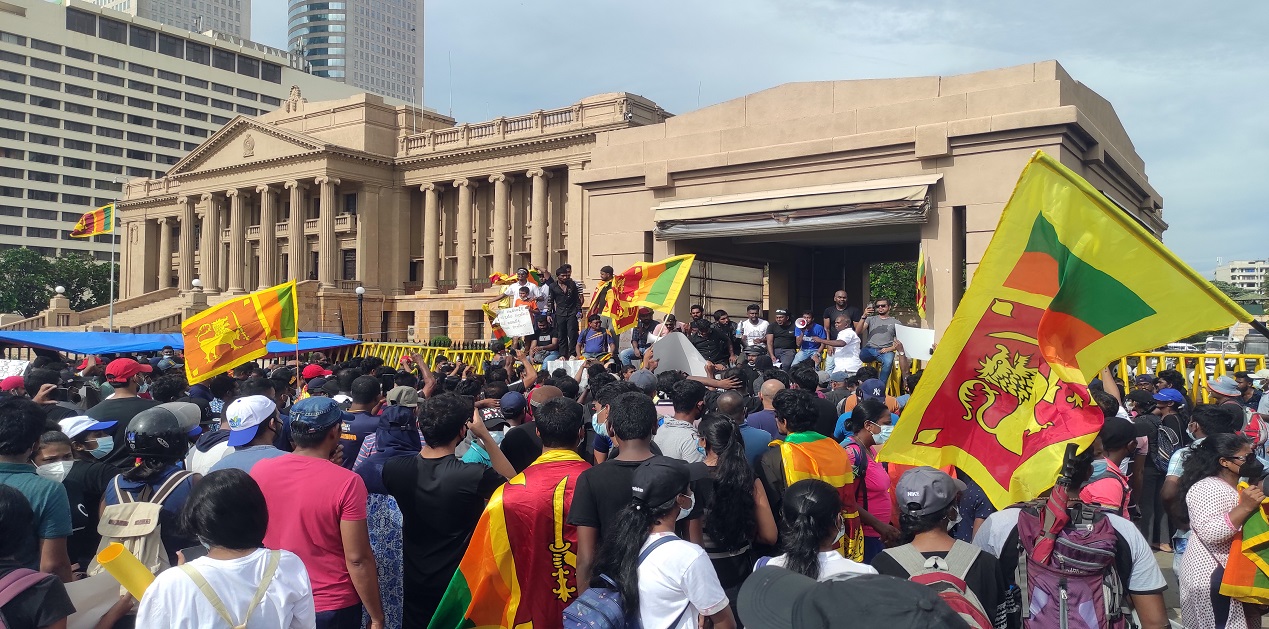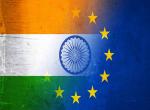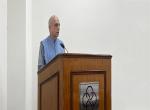India’s neighbourhood is in a churn with both Pakistan and Sri Lanka reeling under severe economic and political crises. While Pakistan, obstinately continues to inflict pain unto itself with its self-defeating obduracy, Sri Lanka finds itself at the precipitous end of the options trail as it faces its biggest economic crisis since its independence in 1948.
A few years back no one would have expected Sri Lanka to land up in such a deleterious situation, facing huge external debts and depleted foreign exchange reserves. People are out on the streets protesting against shortage and rocketing prices of food, fuel, power, gas and essentials, as also 12-13 hour long power outages. The country doesn’t have enough foreign exchange to foot the import bills for daily essentials.
The Development of the Economic Crisis
The crisis did not develop overnight. The cumulative effect of long-term profligacy of leaders, ill-advised policy decisions and some unavoidable circumstances and external factors led to the precipitous decline of the economy.
The economy post victory in the Eelam war in 2009 saw a recovery phase and by 2014 the GDP had improved significantly, riding on the boom in the tourism industry. However, the debilitating structural problems in the economy were not addressed and these continued to drain the economy. The problems included inability of the country to diversify its economy and over dependence on - export basket of just tea, rubber and garments etc, remittances from overseas Sri Lankan workforce, limited domestic production capacity etc. The country therefore possessed a very narrow revenue base. Sri Lanka is completely dependent on import for most of the basic commodities for daily use including medicines, food, fertilizers, fuel, dairy products (mainly milk powder) etc. Daily use commodities thus make up a major part of the import bill.
Thereafter, from 2014 to 2019, there was a 38% increase in debt. Big infrastructure projects such as Hambantota port, Hambantota airport and Colombo port city project pursued by the Rajapaksa governments (2005-2015 and 2019-till today) turned out to be commercially unviable and have not yielded any returns till date adding significantly to the external debts.
The problems were compounded in 2019 when Gotabaya Rajapaksa reduced Value Added Taxes (VAT) by almost 50% from 15% to 8%, abolished nation building tax and several other levies as part of his poll promises in the run up to the elections. By the time the policy was reversed, enough damage was done to an already strained economy.
In September 2021, in order to control inflation the Central Bank set an upper limit of Rupee at 203 per US Dollar, severely impacting the Sri Lankan economy as it led to a decline in migrant remittances, export earnings, tourism earnings, impacted shipping and airline services, and foreign investments in Colombo stock exchange.
Another Rajapaksa decision in 2021, to ban chemical fertilizers and switching to organic fertilizers severely impacted the output of tea, paddy and rubber impacting export revenue and food prices. This decision was also reversed but not before it had caused considerable damage to the economy.
Other unforeseen developments such as the Easter bombings of April 2019 and the COVID-19 pandemic in March 2020 brought the tourism industry on its knees. The tourism industry is the 3rd largest foreign exchange earner for the country. The recovery in tourism post COVID was further quelled by the Russia-Ukraine conflict; Russians and Ukrainians made up almost 25% of tourist arrivals in Jan-Feb 2022. It bears mention that India is the biggest contributor to Sri Lanka’s tourism Industry.
Current position of External Debt and Foreign Exchange Reserves i.e. as of April 2022, Sri Lanka’s total external debt amounts to over $50 billion with an estimated $8.6 billion due this year. Among the various components of loan, it is the sovereign bonds which are the bone in Sri Lanka’s throat because unlike government loans, these cannot be restructured. The foreign reserves have dipped 70% in the last two years and the usable reserves as of now are below $ 50 million while repayments of $ 4.5 billion are due this year. This is a cause of major worry for providing food, fuel and other essential goods for citizens, and repayment of massive foreign debts.
India – Neighbourhood First
Strategic proximity, historical and cultural links make developments in Sri Lanka of grave concern to us. It is imperative for India to be the first responder to any crisis that afflicts Sri Lanka and make efforts to ensure stability in the region. As part of its neighbourhood-first policy, in response to the current crisis, India has committed over $3 billion in loans, credit lines and currency swaps since January 2022. And on 02 May it extended a further $200 million - over and above two earlier tranches of $500 million - of fuel. Sri Lanka has also sought fertilisers, as well as deferment of a $2.5 billion to the Asian Clearing Union. India has already sent a shipment of 11,000 MT of rice and supplied over 270,000, MT of fuel. In November 2021, India had given 100 tonnes of nano-nitrogen liquid fertilizers. India recently pledged to donate medicines to Peradeniya Hospital, which was running low on supplies due to the US dollar crisis and purchasing of medicines had become impossible.
There is a proclivity among a section of the Sri Lankans to see India as an imperialistic and hegemonistic power, and Indian assistance, however benign, evokes apprehension, suspicion and protests. The roots of this suspicion lie in issues related to the Sri Lankan Tamil ethnic community and the LTTE. Indian investments and projects such as the Trincomalee oil farms, western container terminal at Colombo port etc are seen as quid pro quo concessions by the Government in return for Indian assistance.
The agreement between India and Sri Lanka to provide a Floating dock facility and one Dornier Maritime surveillance aircraft at no cost and setting up the MRCC facility by BEL Bengaluru with a grant of $6 million for aiding Sri Lanka navy in Search and Rescue operations in the Sri Lankan Search and Rescue Region caused a furore in the Sri Lankan parliament questioning its impact on security and sovereignty of Sri Lanka. The Janatha Vimukthi Peramuna (JVP) party claimed that Sri Lanka was signing these pacts in return for the $1 billion line of credit India extended to it in March this year to help tide over the ongoing financial crisis. The Sri Lanka Defence Ministry had to issue a clarification in this regard.
India is also steering the NSA level Colombo Security Conclave (CSC) , the fifth edition of which was held in the Maldives in March this year. The CSC was expanded from a trilateral maritime security grouping of India, Sri Lanka and the Maldives in 2011, to included Mauritius as the fourth member while Bangladesh and Seychelles attended as observers, and have been invited to join the group. It is an outreach by India for regional co-operation and shared security objectives among the maritime neighbours and aims to provide “close co-operation among maritime neighbours” to build capacity through training, supply of equipment, upgrading coastal security installations, and exchange of information for “unitedly” countering threats. The members are expected to cooperate to be the first responders for each other in crises and in tackling narcotics trafficking, organised crimes and mitigating threats posed by (maritime) accidents such as the ship fires in Sri Lankan waters that the Indian Coast Guard helped douse on board MT New Diamond and X-press Pearl.
Financially, beyond providing support in its individual capacity, India can garner support from QUAD countries and help in marshalling loans from international financial institutions.
India's corporate sector and private sector should get involved in critical areas of development and under the present circumstances could find attractive opportunities for investment to the benefit of both the parties, thus aiding the recovery process.
Sri Lanka can meanwhile, to increase its tourist footfall, target India’s 2-tier and 3-tier cities which have sizeable populations having disposable incomes. The Indian establishment could help Sri Lanka in this regard.
Implications for India
On security implications for India - global terror organisations might take advantage of the social unrest, chaos and ensuing lack of governance in Sri Lanka. There is precedence of terror networks between Sri Lanka and parts of Southern India. Activation of all these will spell potential threat to our security.
Refugees from Sri Lanka have started landing on the Tamil Nadu shores since 22 March. As on date about 75 Sri Lankan Tamil refugees have arrived escaping the economic hardships brought by the crisis. Intelligence inputs suggest that upto 2,000 people could seek refuge in India over a period of time.
Another impact could be on India’s international cargo as 60% of India’s trans-shipment cargo is handled by the port of Colombo. India-linked cargo accounts for 70% of the port’s total trans-shipment volume. Thousands of containers from India for Sri Lanka as well as for trans-shipment beyond are lying at the port as authorities cannot afford transferring containers between terminals. This disruption could lead to increased costs and congestion issues for India.
China's Role
The Chinese portion makes up 10% of Sri Lanka’s total external debt and could be called a symptom rather than a cause of the crisis. Chinese response to the Sri Lankan economic crisis has been conservative and is now stepping in by giving a $1.5 billion credit line and a $1 billion loan. It has also pushed for the signing of a free trade deal between China and Sri Lanka, to help indigenous Sri Lankan goods. In addition, China contributed 2,000 tons of rice to help alleviate food shortages. It is however a known strategy that China tends to extract strategic assets from debtors against loan repayments as it did in case of the Hambantota port’s 99 years lease. China is also deeply entrenched into the political ecosystem of Sri Lanka. Also, Sri Lanka's dependence on China for infrastructure is likely to continue in the future.
The Political situation in Sri Lanka
The political situation in Sri Lanka remains uncertain and unstable. The entire cabinet resigned on 03 April as unrest and anti-government demonstrations over the financial crisis gained momentum. The PM Mahinda Rajapaksa resigned on 09 May in the wake of violent attack by his supporters against the anti-government protestors. President Gotabaya appointed Ranil Wickremsinghe as the interim Prime Minister on 12 May to stabilise the political situation in midst of a political impasse so that the government can approach the IMF, till such time fresh elections are held and government formed. The new PM’s party has just one seat in the parliament and does not seem to have a political consensus backing his appointment. How such a PM and his government would lead bitter and tough policy decisions to overcome the crisis is a glaring question. President Gotabaya meanwhile does not appear to show any intention of resigning despite the country-wide call for his ouster. The president is not likely to call for elections at this stage as the strong anti-government sentiments across the country would lead to disastrous results for his party.
In order to import urgent requirements of fuel and commodities and for repayment of sovereign loans falling due in July, IMF is the only available option for Sri Lanka although the IMF bailout cannot be considered as a panacea for the economic woes as has been seen in the case of Pakistan. Discussions with IMF have commenced, however the IMF loan would come with stringent conditions on economic policy changes, fiscal discipline etc. Both, negotiating with the IMF and servicing the IMF package would require a stable government.
Meanwhile the coming 6 to 8 months are an opportunity for India to improve its perception among the people of Sri Lanka by way of its actions in assisting Sri Lanka to recover from its biggest crisis yet.
(The paper is the author’s individual scholastic articulation. The author certifies that the article/paper is original in content, unpublished and it has not been submitted for publication/web upload elsewhere, and that the facts and figures quoted are duly referenced, as needed, and are believed to be correct). (The paper does not necessarily represent the organisational stance... More >>
Image Source: https://upload.wikimedia.org/wikipedia/commons/8/83/Anti-government_protest_in_Sri_Lanka_2022.jpg











I read Shashank article on present situation of Sri Lanka very goy analysis of socio-rconomic analysis of Sri Lanka in relationship with strategic situation of India n Sri Lanka. Congratulations for very good article . Welldone
Post new comment